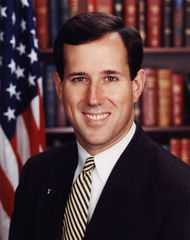How to Handicap the Super Tuesday Contests
Santorum vote totals are averaging nearly five points higher than the final polling numbers in primary and caucus states; Paul vote totals average four points higher in caucus states

Ohio has three things going for it that makes it a must-watch state: 1) it is the second most delegate-rich Super Tuesday state (behind Georgia), 2) it is a rust belt state neighboring Santorum’s Pennsylvania, and thus is considered a necessary stepping stone to boost his underdog campaign, and 3) polling in the state is among the tightest out of any Super Tuesday contest.
But as the final polling results trickle in across many of the Super Tuesday states over the next day, the guide below may be helpful in calculating how to translate these survey numbers with what will happen when actual votes are cast.
A Smart Politics review of more than 40 polls leading up to the primaries and caucuses in 11 states thus far in the 2012 election cycle finds that Rick Santorum’s vote total has eclipsed his polling numbers by an average of +4.7 points per state – more than any other candidate.
Smart Politics examined the difference between the vote received on primary or caucus day and the average support measured by pollsters conducted within a week of the contests across the 11 states in which surveys were available: Iowa, New Hampshire, South Carolina, Florida, Nevada, Minnesota, Colorado, Missouri, Michigan, Arizona, and Washington.
Overall, Santorum received an average of +4.7 points more on the day of the primary or caucus contest than what he registered in those states’ latest surveys.
Ron Paul was the only other candidate whose average vote in the contests was higher than his average polling numbers (+1.1 points), with voting percentages for Mitt Romney nearly even with the polls (-0.6 points) and votes for Newt Gingrich -2.3 points worse than survey averages.
Of course, there is always going to be some movement between surveys and election results due to a survey’s margin of error, undecided voters, and, especially in the 2012 GOP contests, a large number of voters who say they plan to vote for a particular candidate but may change their mind.
The point of this report is to highlight which candidates are seeing the largest gaps in survey and election results, and in what direction.
Moreover, some states are more difficult to poll than others, particularly caucus states where turnout is tricky to measure when applying weights to raw polling results.
Many organizations do not even attempt to field polls in caucus states. For example, Public Policy Polling (PPP) was the only survey organization to poll Minnesota, Colorado, and Washington in the final days before the caucuses of those states, with no pollster attempting Maine or Wyoming down the home stretch.
Surveys measuring support for Santorum, however, were notably shy of his vote total in both types of states.
Actual vote percentages for Santorum were +5.1 points higher in the five caucus states than his polling average and +4.4 points higher for the six primary states.
This movement supports the notion that Santorum frequently has momentum in the closing days leading up to a state’s contest, with undecided voters breaking for the former Pennsylvania U.S. Senator.
The one state where Santorum performed significantly ‘better’ in polls than in the actual contest was in the recent Washington caucuses, where Santorum support registered at -8.2 points less (23.8 percent) than that measured by the one recent poll conducted in the state (32 percent, by PPP).

Political observers have long acknowledged the intensity of Paul’s caucus voters and the strength of his organization in these states, but pollsters fell far short in states such as Washington (8.8 points less than his vote percentage), Minnesota (7.2 points) and Nevada (6.2 points). (Paul’s support in Iowa (-0.5 points) and Colorado (-1.2 points) was slightly lower than that measured by survey organizations).
On the other hand, voter turnout for Newt Gingrich in caucus states has been consistently lower than that measured by pollsters in the closing days of the campaign (-5.3 points) with the actual results in primary states closely resembling the pollster findings (+0.6 points).
Support for Romney on average has been virtually identical on voting day when compared to recent polling in both caucus states (-0.9 points) and primary states (-0.6 points).
Difference Between Voting Results and Polling in 2012 GOP Primary and Caucus States by Candidate
|
Candidate
|
Primaries
|
Caucuses
|
Total
|
|
Rick Santorum
|
+4.4
|
+5.1
|
+4.7
|
|
Ron Paul
|
-1.5
|
+4.3
|
+1.1
|
|
Mitt Romney
|
-0.6
|
-0.9
|
-0.7
|
|
Newt Gingrich
|
+0.6
|
-5.3
|
-2.3
|
Note: Polling averages compiled from the most recent pollster surveys within one week of primary or caucus day. Table compiled by Smart Politics.
The grid below documents the average positive or negative difference in election results for each candidate on primary and caucus day relative to the most recent polling estimates for each type of contest vis-à-vis the rest of the field.
The biggest differences are for Santorum (+10.4 points) and Paul (+9.6 points) vis-à-vis Gingrich in caucus states.
On the primary side, the biggest differences are for Santorum vis-à-vis Paul (+5.9 points) and Romney (+5.0 points).
Difference Between Final Voting and Polling Results From Candidate to Candidate in Caucuses and Primaries
|
Caucuses
|
Romney
|
Santorum
|
Paul
|
Gingrich
|
|
Romney
|
—
|
-6.0
|
-5.2
|
+4.4
|
|
Santorum
|
+6.0
|
—
|
+0.8
|
+10.4
|
|
Paul
|
+5.2
|
-0.8
|
—
|
+9.6
|
|
Gingrich
|
-4.4
|
-10.4
|
-9.6
|
—
|
|
Primaries
|
Romney
|
Santorum
|
Paul
|
Gingrich
|
|
Romney
|
—
|
-5.0
|
+0.9
|
-1.2
|
|
Santorum
|
+5.0
|
—
|
+5.9
|
+3.8
|
|
Paul
|
-0.9
|
-5.9
|
—
|
-2.1
|
|
Gingrich
|
+1.2
|
-3.8
|
+2.1
|
—
|
Table compiled by Smart Politics.
Follow Smart Politics on Twitter.
